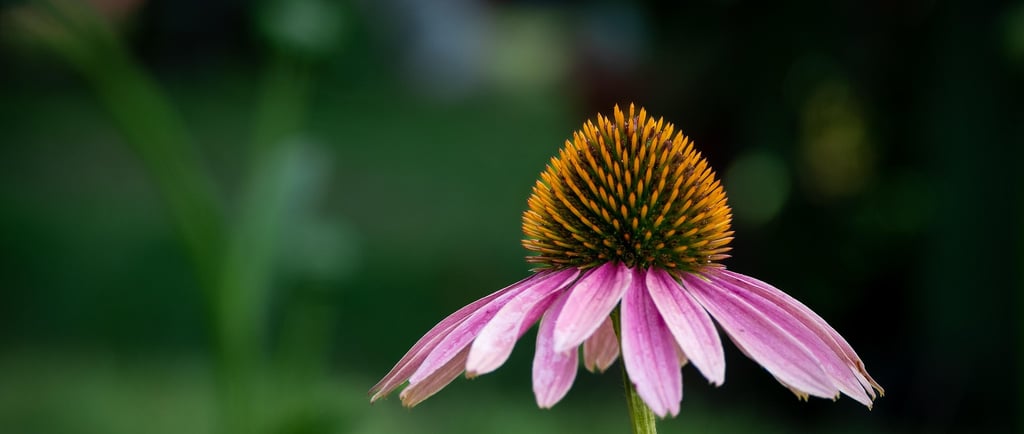🦔The Hedgehog from the Prairie with the Pink Petal Skirt 🌸 The Echinacea 🌾
A follow-up story that connects The Flower and Ecology chapters in the Biology Album and The Circle in the Geometry Album. 🌿📐 It invites children to observe the radial symmetry of echinacea—how its star-shaped petals and spiny cone reveal a hidden geometry in nature. 🌟 The story also introduces a fascinating plant adaptation: ciliate margins—those tiny, hair-like fringes along the edges of the leaves—encouraging children to look even more closely at nature’s clever protective patterns. 🔍🌾💧 Rooted in traditional herbal knowledge and native ecosystems, this flower becomes a symbol of balance—between humans and plants, and between geometry and biology. Children are invited to wonder: “What other flowers have radial symmetry? And what other leaves wear fuzzy fringes like eyelashes?” 💭🌼👁️
BIOLOGY STORIES
6/14/20252 min read


Do you know the name of this plant? That’s not a strawberry on a stick sitting on a bed of pink petals! 🍓🌸If you walk through the tall grass prairies in the heat of summer, you might spot a flower standing tall and proud—like a hedgehog wearing a petal pink skirt 🦔👗🌼 This is echinacea (👏 e 👏 chi 👏 na 👏 cea).
Its name comes from the Greek word ekhinos, meaning hedgehog , because of that spiny, raised cone in the center. 🌼🦔 But don’t worry, it won’t poke you! The cone is made of hundreds of tiny flowers, all packed together in a composite inflorescence.🌻🌾 Each little floret holds nectar and pollen—like a snack bar for the visitors.
And who do you think pollinates this hedgehog-like flower? 🐝🦋 Bees and butterflies love the nectar hidden in its tiny florets, and while they dance from petal to petal, they pick up pollen and carry it to other flowers—helping new seeds grow. When the flower dries at the end of the season, those spiky cones hold the seeds like tiny treasure chests. 💎 Wait until the cone turns brown, then gently tap it—confetti-like seeds will fall into your hand! 🌱🎉
The echinacea is also called coneflower—look closely at its shape… 👀 That large, bristly cone rises like a mountain in the middle of purple or pink petals that droop downward like soft rays of sunshine. This is radial symmetry— can you think of other flowers with radial symmetry? Just like a sunflower or daisy! 🌟🌼 Every part radiates out from the center in balance and harmony. Does it remind you of something you’ve seen in the geometry cabinet? 🔵📐
Echinacea’s long, strong leaves have netted venation—a pattern where the veins branch out like rivers. That’s one clue it’s a dicot! 🌿 Try gently rubbing a leaf—can you feel its rough texture? 🌿 If you look closely at the edges of the echinacea leaf, you’ll notice something special—tiny hairs lining the margins. These are called ciliate margins (👏 ci 👏 li 👏 ate)—from the Latin word cilium, meaning “eyelash”! 👁️ They might look delicate, but they’re part of the plant’s clever protection system, helping to discourage insects from nibbling too much. You could say the echinacea leaf wears tiny green eyelashes! 👁️🌿✨
But this flower isn’t just admired—it’s been used for centuries. Long before pharmacies, people turned to echinacea for healing. 🌱 Native American communities across the plains knew this flower well. Тhey used its roots, leaves, and flowers as powerful plant medicine. 🌿 The Lakota, Cheyenne, and Sioux used Echinacea to treat wounds, toothaches, coughs, and even snakebites. It was known as the “Elk Root”, because injured elk were seen digging it up and eating it to feel better—so people followed their lead. 🦌🌿
Later, European settlers learned from them and began using echinacea as one of the most trusted herbal remedies in North America. Even today, many people sip warm echinacea tea made from dry petals and stems when they feel a tickle in their throat or a cold coming on. ☕🌿 Isn’t it amazing that one prairie flower can hold so much healing?
🌟 In some parts of the United States, echinacea is known as the guardian of the prairie. In native legends, it was a sacred gift of the land, trusted by healers and carried in medicine bundles.
💭 I wonder…In what other colors does echinacea bloom? 🌸🌼What other prairie flowers did Native American peoples use as herbal helpers when there were no pharmacies around? 🌿🩺And what about those fuzzy leaf edges—called ciliate margins—can you spot other plants that wear tiny hairs like eyelashes? 👁️🍃 Let’s go exploring in the garden or forest and find out!
With Montessori joy,
Vanina 😊

